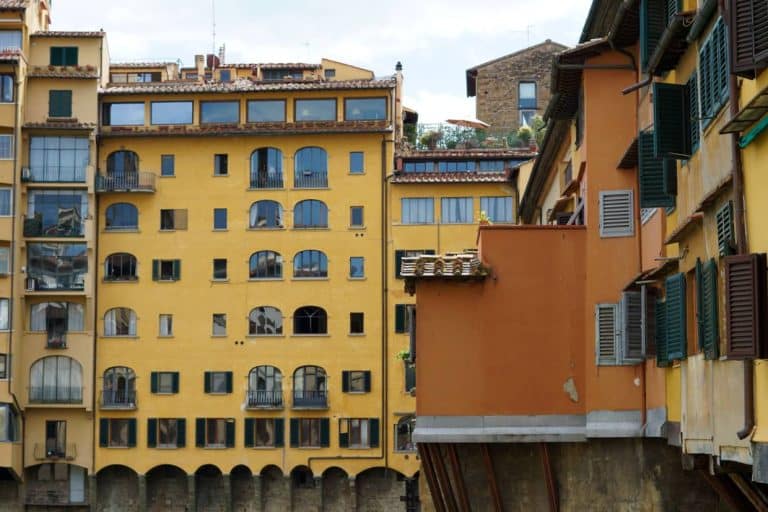UNIQUE places to visit in Italy
So you’ve been to Italy on several occasions, and this time you want to see something else. While Florence, Rome, Venice, or the Amalfi Coast are all stunning places, they have become overpacked with people.
A recent study says that most travelers see just 1% of Italy. That’s why you will want to skip all that and go to some of these places instead. They’re not only lesser-known, but also places that will blow your mind.
This post contains affiliate links to products and services that I may be compensated for, at no extra cost to you. Read more about this on our disclosure page here.
Table of Contents
UNIQUE places to visit in Italy
Santuario Madonna della Corona
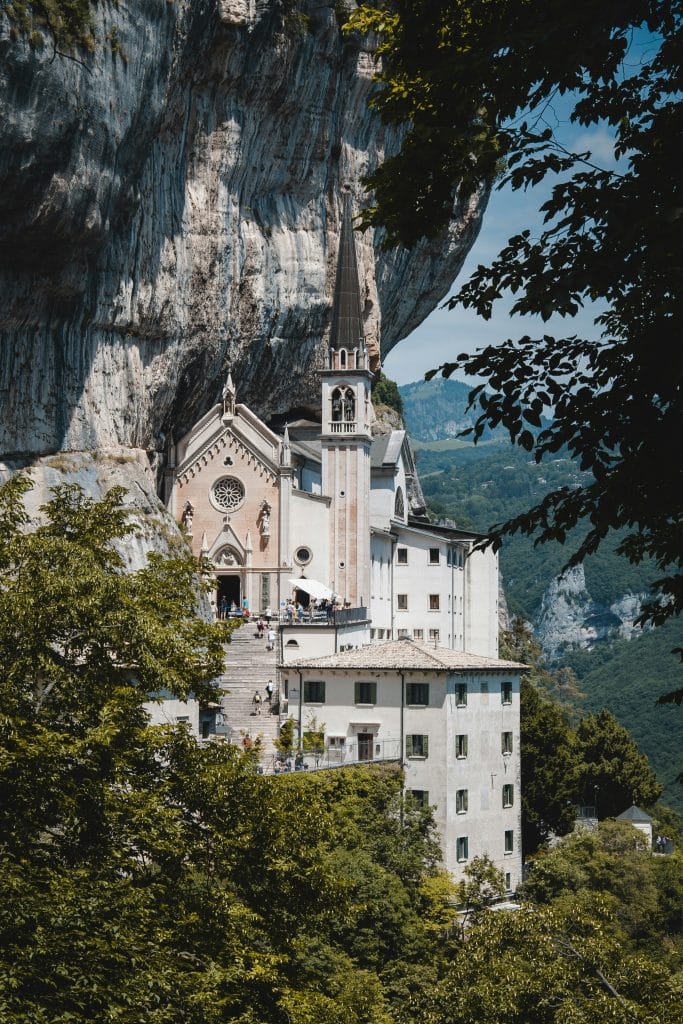
One of those places that doesn’t even feel real the first time you see it. Imagine a church literally built into the side of a vertical cliff, about halfway up Monte Baldo, overlooking a massive gorge with nothing but forest and silence below. It’s so dramatically perched that from a distance, it almost looks like it’s hanging in midair.
The sanctuary dates back to around the 11th century, though it became a proper pilgrimage site in the 15th century when hermits and monks started using the caves there for worship.
The current structure, a blend of Gothic and modern elements, was rebuilt in the late 19th century and restored again in the 1970s. But the original sense of isolation and devotion is still very much intact.
To get there, you head to the little town of Spiazzi, which is about an hour from Verona.
Lago di Resia
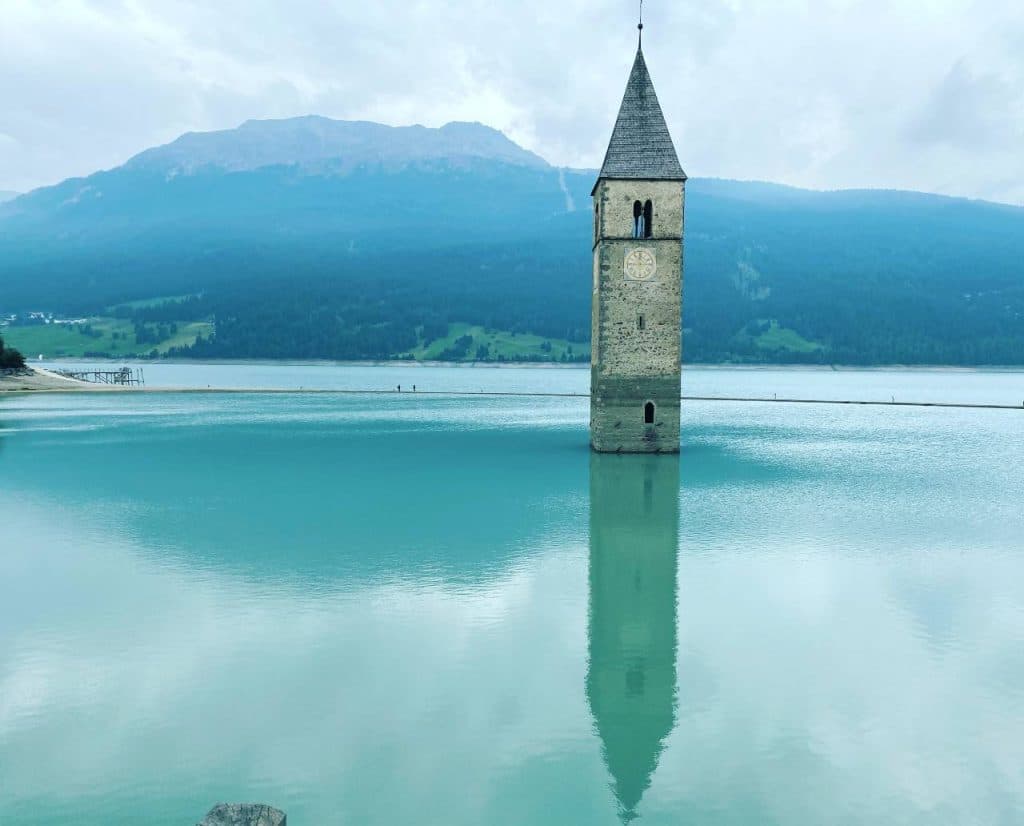
This place looks straight out of a dream! A calm alpine lake with a lone church tower rising out of the water. It’s all that remains of the old village of Curon, which was deliberately flooded in 1950 to create a hydroelectric reservoir. The rest of the town still lies submerged beneath the surface.
You’ll find it in South Tyrol, near the borders of Austria and Switzerland. The nearest town is Curon Venosta (Graun im Vinschgau), and it’s easy to reach by car from Merano or Bolzano.
In summer, it’s a stunning spot for walking or cycling along the lakeshore; in winter, when the lake freezes, you can actually walk right up to the bell tower.
Orvieto’s Underground City
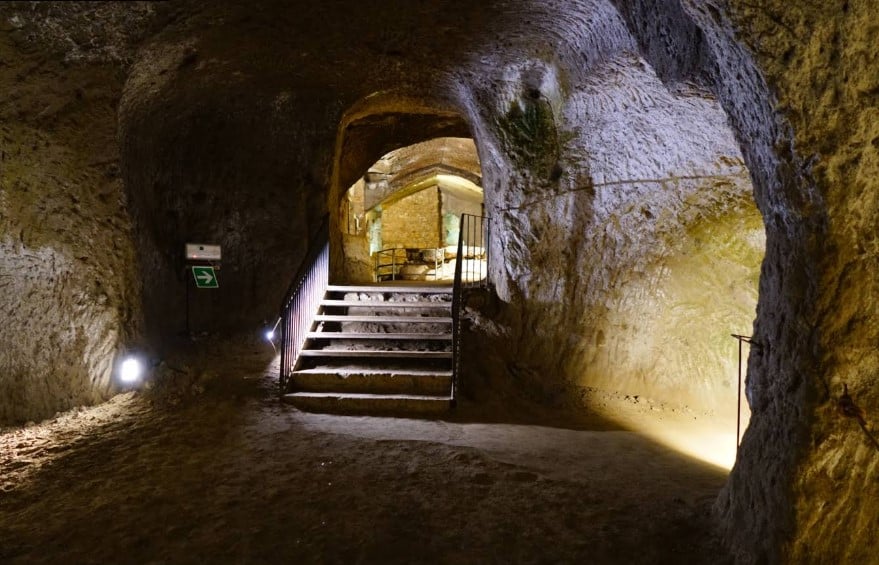
Beneath the postcard-perfect hill town of Orvieto lies a whole hidden world most visitors never realize is there. The Orvieto Underground is a maze of more than 1,200 caves, tunnels, and wells, carved into the soft volcanic rock (tufa) over nearly 3,000 years — first by the Etruscans, then expanded through the Middle Ages.
Down there, you’ll find everything from ancient olive presses and wine cellars to pigeon roosts and secret escape routes. It’s like peeling back layers of time beneath your feet.
You can visit on a guided tour starting from Piazza Duomo, right near Orvieto’s famous cathedral.
Getting to Orvieto is easy — it’s about a 1½-hour train ride from Rome.
The Sunken City of Baia
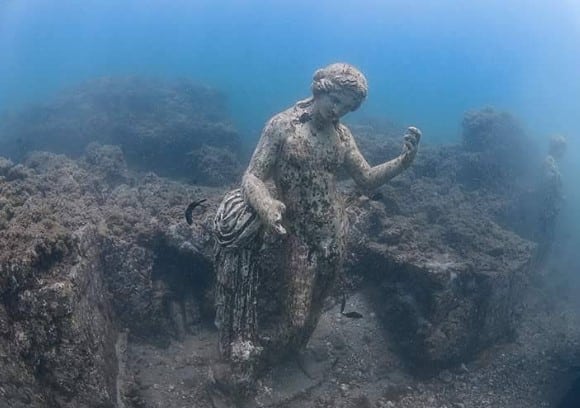
Baia is basically Italy’s own Atlantis. An ancient Roman resort town that now lies mostly underwater in the Bay of Naples.
Two thousand years ago, it was the playground of emperors and the elite — think Nero, Julius Caesar, and Caligula — who came here for thermal baths, parties, and luxury villas.
But over the centuries, volcanic activity caused the land to sink slowly into the sea, leaving entire neighborhoods, mosaics, and marble statues preserved beneath the waves.
Today, you can actually dive or take a glass-bottom boat to see streets, villas, and even frescoes lying quietly below the surface. It’s surreal swimming through ancient Roman history surrounded by fish.
The nearest town is Bacoli, just north of Naples, and it’s easily reachable by car or train.
Terme di Saturnia
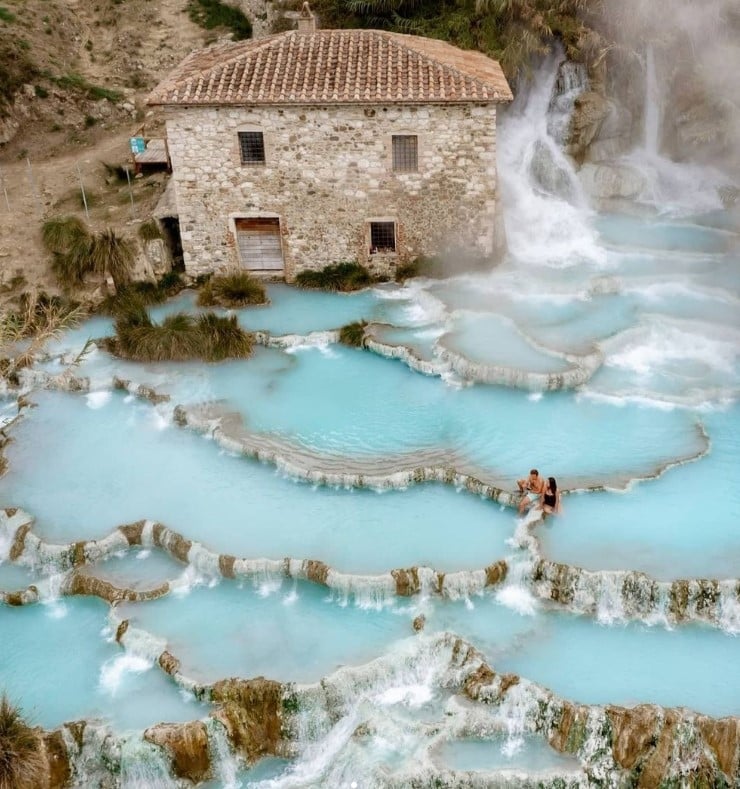
Tucked into the rolling hills of southern Tuscany, Terme di Saturnia looks like something out of a dream – a series of natural hot springs cascading over limestone terraces.
The water stays a cozy 37°C (98°F) year-round and has been flowing here since ancient Roman times (legend says it was created when the god Saturn struck the earth with a lightning bolt).
You can visit the free public pools at Cascate del Mulino, just outside the town of Saturnia. Or book into the nearby spa resort for a more private soak. Either way, it’s pure relaxation surrounded by the Tuscan countryside.
Scala Contarini del Bovolo
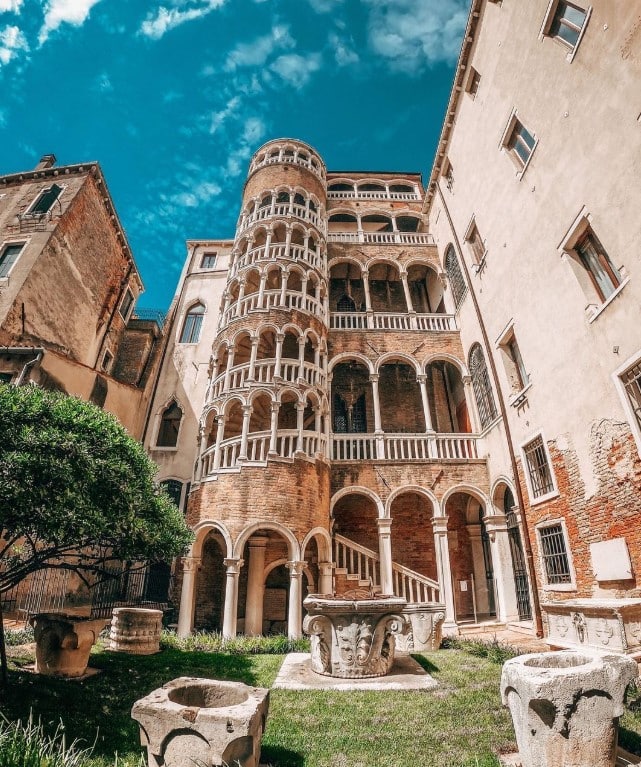
Tucked away in a quiet corner of Venice, the Scala Contarini del Bovolo is one of the city’s hidden gems. A beautiful spiral staircase that winds elegantly up the side of a 15th-century palace.
“Bovolo” means snail shell in Venetian, and once you see its perfectly coiled arches, you’ll get why.
Climb to the top and you’re rewarded with a panoramic view of Venice’s rooftops and domes, far from the crowds of St. Mark’s.
It’s just a few minutes from the Rialto Bridge, yet most tourists walk right past it, which makes it even better.
Ponte della Maddalena
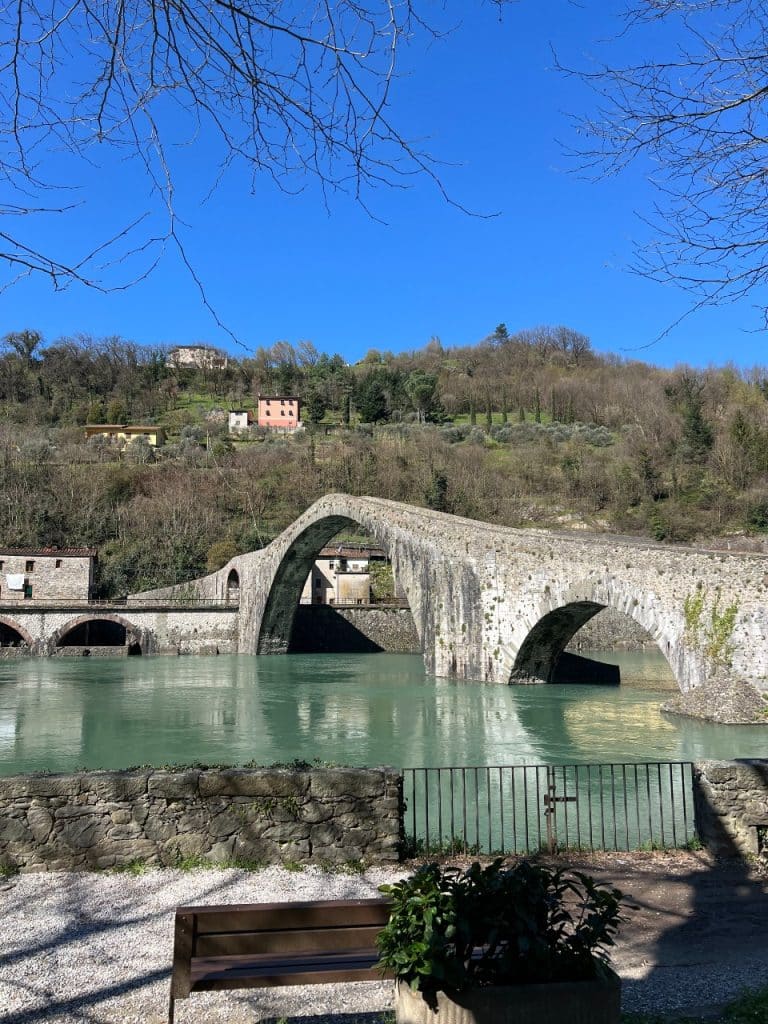
This impressive bridge, located a few kilometers outside of Lucca, is also known as the Devil’s Bridge.
It once allowed travellers and pilgrims to reach Lucca and the Francigena, and it has a few legends surrounding it.
When the bridge was being built in the Middle Ages, the master builder realized he couldn’t finish it on time. Desperate and fearing disgrace, he was approached by the Devil, who offered to help complete the bridge overnight. The price? The Devil would claim the soul of the first living being to cross it.
The builder agreed, and true to his word, by dawn the bridge stood complete. Its steep, elegant arches stretching across the Serchio River.
But the builder was clever. Feeling guilty, he sought advice from a local priest, who suggested sending a pig (or sometimes a dog, depending on the version) across the bridge first.
The Devil, enraged at being tricked, vanished into the river with a splash of fire and smoke, never to return. Locals say on misty nights, you can still sense his presence beneath the arches.
The Ghost Town of Craco
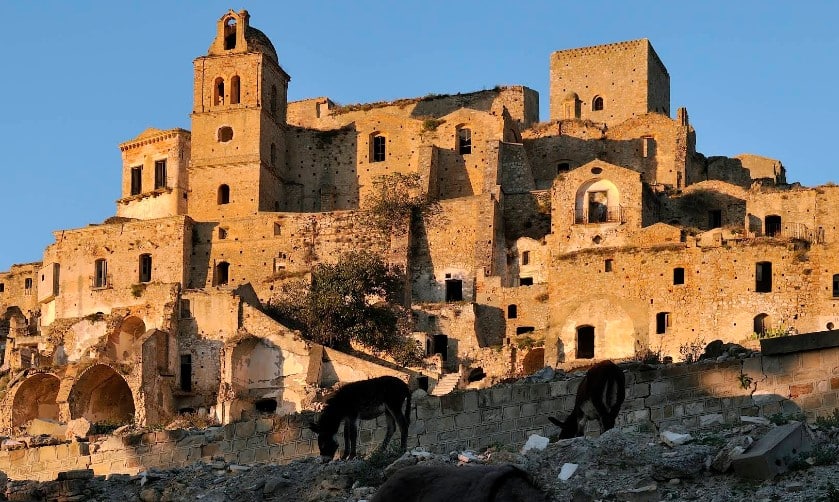
Craco is a hauntingly beautiful ghost town in southern Italy’s Basilicata region. Once a thriving medieval hilltop village, it was abandoned in the 1960s after landslides made it unsafe.
Now, the town displays empty stone houses, silent streets, and crumbling towers that stand frozen in time.
Walking through feels like stepping onto a movie set — which makes sense, since films like The Passion of the Christ and Quantum of Solace were shot here.
The Gaudi-like building in Grosio
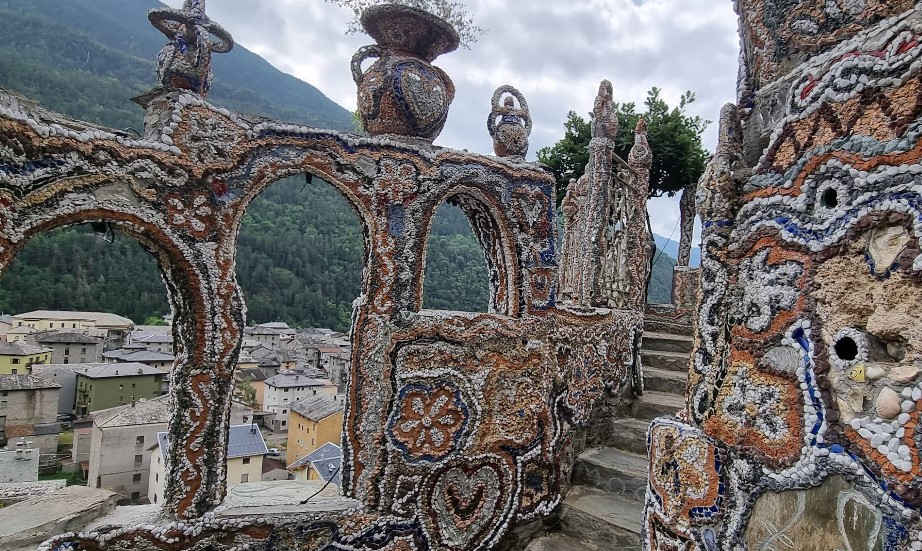
Hidden in the small town of Bomba, in Abruzzo, the Giardino Roccioso Nicola di Cesare is a quirky, poetic garden sculpted entirely out of stone.
Local artist Nicola di Cesare spent decades carving faces, animals, and abstract forms into the rocks surrounding his home, turning the hillside into a dreamlike open-air museum.
It’s quiet, personal, and full of soul – part garden, part sculpture park, part glimpse into one man’s imagination.
Civita di Bagnoregio
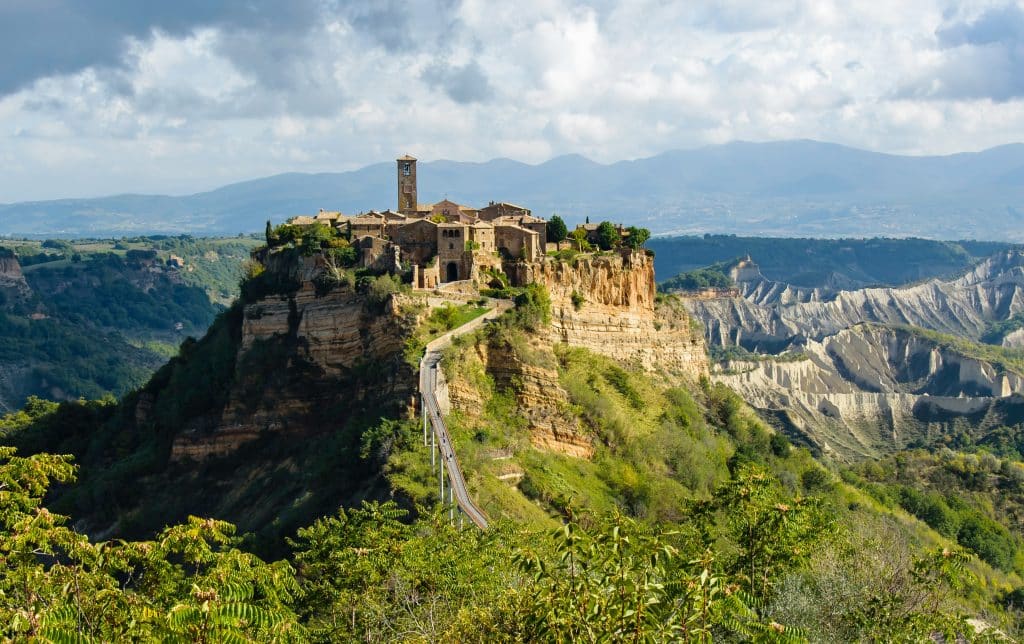
Civita di Bagnoregio looks like it’s floating in the clouds — a tiny medieval village perched on a crumbling hill of volcanic rock.
Nicknamed “the dying city”, it’s slowly being reclaimed by the wind and time. The town sits on a hill of volcanic tuff, a soft rock that is gradually worn away by wind and rain.
You reach it only by a pedestrian bridge that stretches across a dramatic valley. Once inside, it feels like stepping back centuries.
Today, only a few dozen residents live there year-round. And the town is preserved chiefly for tourists and cultural heritage.


